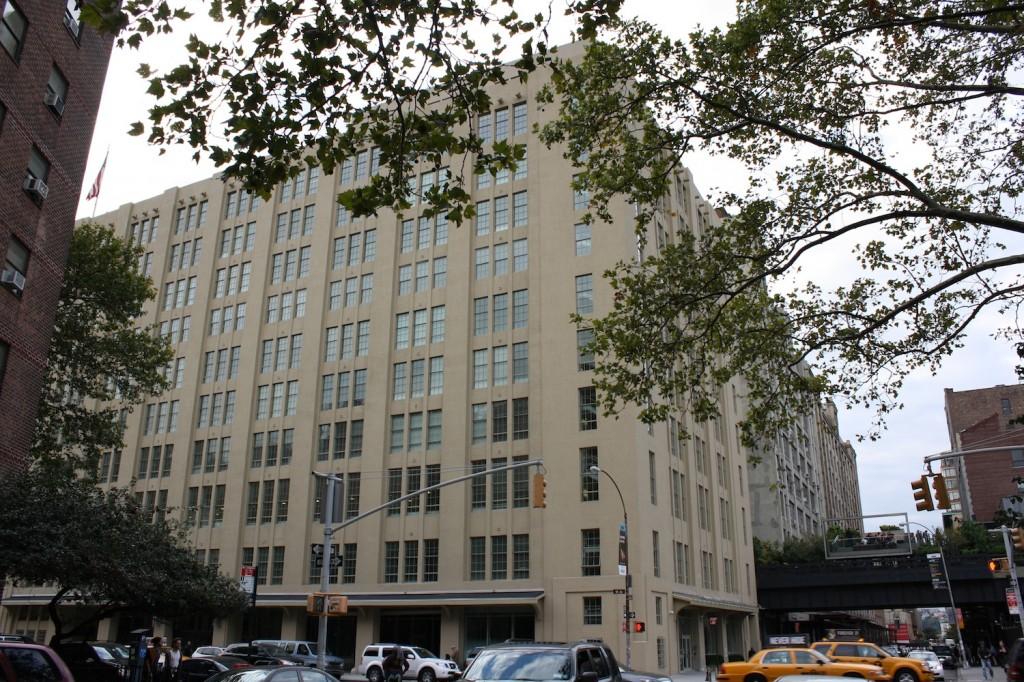Education is for the Elite
Chelsea’s Avenues: The World School is offering its students the most extravagant education money can buy. (Rex Sakamoto/The Observer)
October 4, 2012

Education and media entrepreneur, Chris Whittle, recently opened Avenues: The World School in Chelsea, the latest addition to New York City’s clique of hip, pricey, elitist private schools. With a tuition priced at almost $40,000 and a neighborhood filled with chic condos, galleries and high-end retail shops, the K-12 World School is definitely for big shots only.
Not impressed by the sticker price? Maybe the amenities will change your mind: a Hearst-like cafeteria with a view of the High Line, sunny lounges on each floor with two-story ceilings and soft leather couches, year-long study abroad for all middle and high-school aged students, fully-stocked cubicles for each child, integrated arts curriculum specializing in photography, music composition and dance education. Oh yeah, and everybody gets an iPad!
Flashy indeed. But that’s what a private-school education gets you. With more private schools like Avenues opening up, along with the ever expanding phenomenon of charter schools, we are seeing how getting a decent education is increasingly becoming a resource reserved for an exclusive, financially privileged crowd. But why does it have to be that way? In a country that is struggling with other world powers to keep up in technological, scientific and mathematic advancements, why is it that young people’s education consistently takes a back seat to things like war efforts, tourism and Wall Street bailouts? If it takes $40,000 a year to provide a child with the skills and knowledge they need to succeed in higher education, then what is happening to the child getting a public school education?
Note these are the words of a woman that spent her middle and high-school years at an independent preparatory school serving upper-middle class families. I sat in classrooms of 13 students in a lovely Westchester town and was fortunate enough to travel to Belgium, Japan and Brazil by my senior year—experiences I had because of my school’s “we are the world” approach to education—one very similar to that of Avenues. I may not have liked going to school as a token-black among dozens of aloof white kids that wore designer clothes to algebra or parked shiny new Elements next to my dented and dingy ’97 Toyota, but I was grateful for every minute of it. I watched my exhausted mother drive to work at all hours of the day, sticking in moonlighting shifts at a hospital in the next county on weekends so she could have enough tuition for my sister and I all through our high school years and onto college.
I am not knocking private school education. Having a private school education has done me a world of good. But we have to find a way to spread the wealth. I am happy that Suri Cruise can sit in an Avenues classroom this fall supplied with the latest Smartboards, listening to a lecturer from the Rubin Museum while her iPad is laid out in front of her. But I’m concerned about Sandra Cruz sitting at her bubble-gum laden school desk at P.S. 168 in Mott Haven. Her school has failing progress reports from New York’s Department of Education and her teachers are paid about $40,000 less than Suri’s. Only 79 percent of her classmates actually stay in school throughout the year. And while Tom and Eric from Avenue’s rival schools like Dalton and Trinity on the Upper East Side have a teacher to student ratio of one to six, Carlos from P.S. 138 in East Harlem has a ratio of one to 13.
Avenues can boast of its state of the art architecture, expansive digital library and comprehensive training in athletics and the arts. But some of our New York schools can’t even afford musical instruments. Many of our schools are giving our students outdated textbooks—that is if they have enough to go around. On top of all this, Mayor Bloomberg has routinely laid-off thousands of public school teachers to add millions of dollars to the city budget, eliminating crucial after-school programs. For 2012, our children lost over 6,000 educational professionals in their classrooms and extra-curricular activities.
My mother managed to scrape and budget enough of her money to ensure that my sister and I didn’t have to experience firsthand the gang violence, drug culture and poorly staffed and supplied classrooms of our hometown’s public schools. But what about the New York parents that can’t? Does that mean that the future of their children doesn’t matter? Whittle’s education model will probably help many children get into Ivy Leagues by their last year at Avenue’s, but the school can only serve a couple hundred students at its New York campus. That leaves out thousands of other New York City children. When did giving children a good education stop being a valued public service and start becoming a business?
Surely, New York City’s government officials have to juggle various issues to serve its community. Unfortunately, that will sometimes mean cutting funds from services we depend on and believe are important. But we have to draw the line somewhere. The notion is trite, yet it is true: educating our children is the key to a successful future. In a country that is grappling with how to maintain (or regain) its prestige and economic strength, we cannot afford to underserve our youth.









